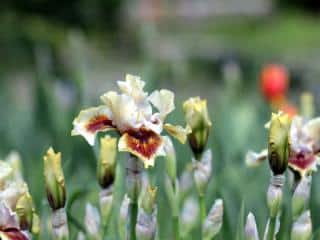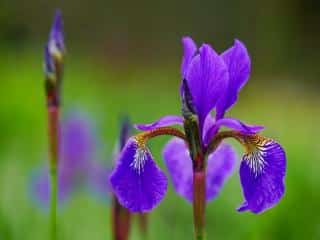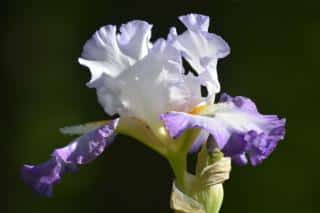

Bearded iris is a perennial that is as easy to grow as it is ornamental when it blooms.
A summary of bearded iris facts
Name – Iris barbata, I. germanica
Family – Iridaceae
Type – bulbous flower or perennial
Height – 8 to 36 inches (20 to 90 cm)
Exposure – full sun, part sun
Soil – ordinary
Flowering – January to July depending on the variety
All in one classical, beautiful and elegant, it loves growing in the sun and doesn’t ask for anything else!
Ideally, bearded iris is to be planted in fall or in spring for it to bloom in the following summer.
 Plant the bearded iris rhizomes in the sun in a spot where it gets hot in summer.
Plant the bearded iris rhizomes in the sun in a spot where it gets hot in summer.More or less every 3 years, you’ll do well to divide the clumps and separate the rhizomes in order to regenerate the foot.
If sowing, best to sow in pots in September-October.
 Bearded iris is a very easy perennial to care for and generally doesn’t require any care when it is properly settled in.
Bearded iris is a very easy perennial to care for and generally doesn’t require any care when it is properly settled in.
 Bearded iris is a rather hardy plant that survives winter pretty well, so it needn’t be protected.
Bearded iris is a rather hardy plant that survives winter pretty well, so it needn’t be protected.
Three magnificent petals form the flower, and their colors are most varied.
Often in tones of purple, they can also be blue, yellow, red or white.
Bearded iris flowers tend to be more frilly and wider than those of other types of iris such as Dutch iris, for instance.
The lifespan of a bearded iris can reach anywhere from 5 to 20 years.
To ensure it lasts a generation, offer it bulb-plant organic fertilizer every year after the blooming.